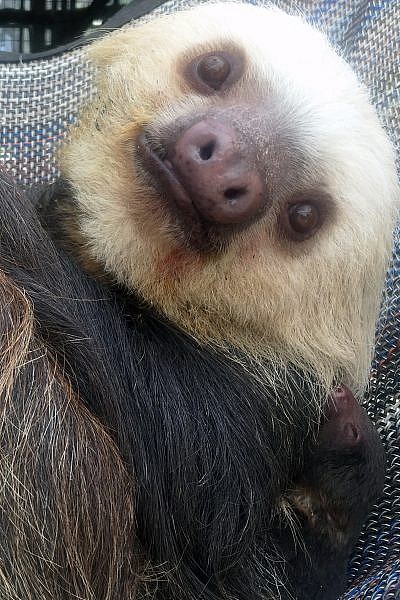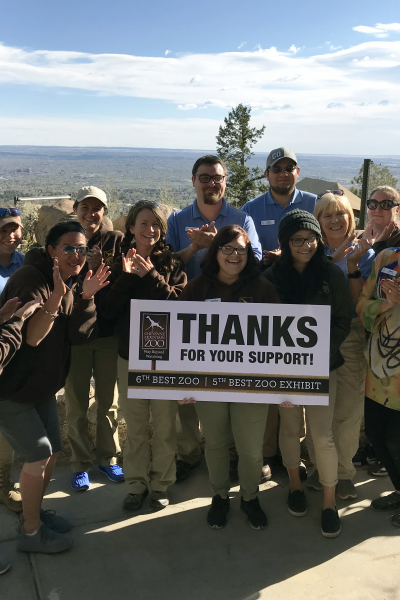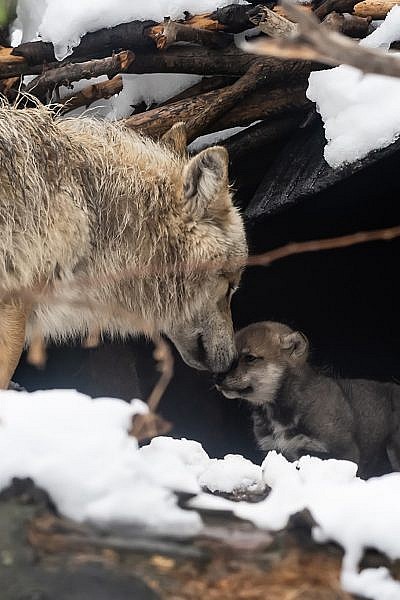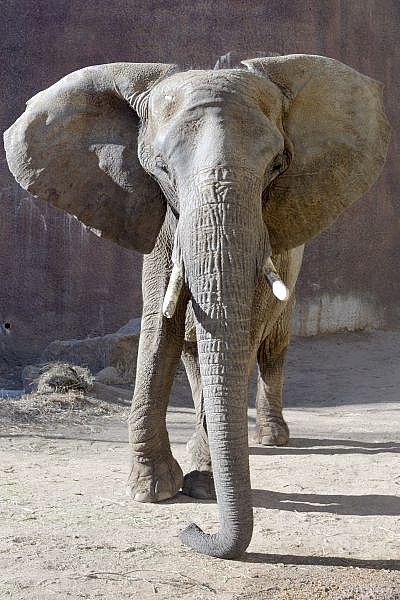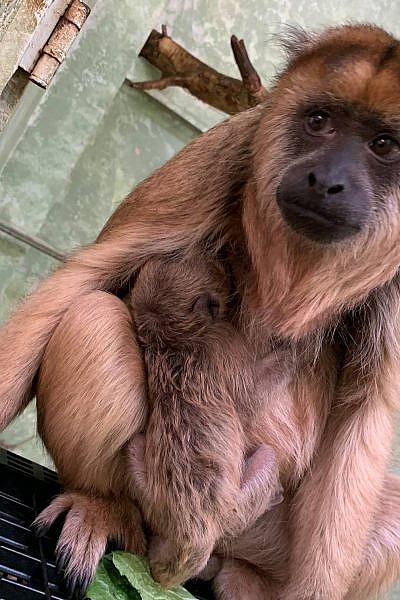Zoo members give $75,000 to projects in Colorado Springs and worldwide
Colorado Springs, Colo. – Each year, Cheyenne Mountain Zoo members vote to select which CMZoo staff-championed conservation projects will receive funding. This year, $75,000 was allocated to support projects in the Democratic Republic of Congo, Ecuador, Kenya, Laos, Vietnam, and right here, in Colorado Springs.
Since 2015, Cheyenne Mountain Zoo member conservation grants have provided $375,000 of membership revenue to support field conservation worldwide. These funds are contributed directly by the Zoo’s members, as a part of their membership fees.
“This funding allows us to stay nimble in supporting frontline conservation efforts,” said Dr. Liza Dadone, vice president of mission and programs at Cheyenne Mountain Zoo. “Our legacy conservation partners, which receive support through our Quarters for Conservation funding, receive our long-term support. These staff-championed member-vote projects can support more emergent needs, like Save Vietnam’s Wildlife’s immediate need to care for 168 pangolins rescued from illegal wildlife trade.”
CMZoo members voted for their choice of eight nominated projects in March. The three projects that received the most votes received the full funding requested. Taking member votes and other indicators into consideration, a committee of CMZoo staff members determined how to distribute the remainder of the annual contribution.
“Our members are invested in these conservation efforts,” said Emmaline Repp-Maxwell, CMZoo membership manager. “This vote provides them the opportunity to help decide which projects receive funding that their membership fees support. By helping members connect with a specific cause, they realize their impact, and hopefully continue to take an interest in that cause. We work to help people make connections that inspire them to take action.”
The top three 2019 Member Conservation Vote winners, which will receive full funding, are:
African Lions – $3,000
A continued partnership, the Ewaso ‘Lion Kids Camp’ educates Kenyan children of pastoral families in ways to avoid lion predation of their livestock. Without the help of local communities, African lions could be extinct in the wild within 20 years. This funding will help support a youth camp designed to connect these children to the local wildlife and nature, encouraging them to protect and champion big cats.
Pollinator Gardens for Five Local Schools – $15,000
Pollinators, like butterflies, birds and bees, are incredibly important to a healthy habitat and help fertilize many of the plants, fruits and vegetables we enjoy. This program helps to teach students the importance of protecting pollinators by building a garden they nurture and grow. In 2018, members voted to support three Colorado Springs schools’ pollinator gardens, which are being established now, in 2019. Because CMZoo members voted this project in the top two for the last two years, CMZoo will offer an additional two grants, for a total of five new gardens, for $3,000 each. The region from which applicants may be considered will be expanded to include communities that neighbor Colorado Springs.
Mountain Tapir – $26,566
Found in Columbia, Ecuador and the far north of Peru, only 2,500 mountain tapir remain in the wild. CMZoo is one of two zoos in North America that this species calls home. A continuation of past monitoring projects, these funds would support the radio collaring of five additional tapirs in the wild, and collaboration with community education programs. This project, based in Ecuador, has already yielded important information regarding the movement, behaviors and territory of this critically endangered species. That data is vital in proving which areas of wilderness need protection if this species is to survive.
The remainder of the $75,000 grant fund was distributed to support three additional projects:
Save Vietnam’s Wildlife’s Emergency Pangolin Care – $5,000
Found in Africa and Asia, pangolins are the most trafficked animals in the world. Because they are also threatened by deforestation, all eight species of the pangolin are considered threatened with extinction (two of which are critically endangered). Save Vietnam’s Wildlife focuses on the recovery and release of native species confiscated in the illegal wildlife trade. This contribution is allocated for emergency funding to assist in the care of 168 recently confiscated pangolins, the largest group confiscated to date. These funds will help provide veterinary care until the pangolins are re-released.
Okapi Conservation Project – $15,000
Found in the heart of the Democratic Republic of Congo, and one of the most biologically diverse areas in all of Africa, okapi have only been known to science since 1901. Threatened by habitat destruction, mining, poaching and civil unrest, there may be as few as 10,000 left in the wild. Through the Okapi Conservation Project, this funding would support a community outreach program for World Okapi Day to promote local education and co-existence between okapi, their habitat and local villages. This project is co-supported by four other zoos.
Project Anoulak – $11,250
Based in the Annamite Mountains of Laos, Project Anoulak works to conserve and study wildlife in the Nakai-Nam Theun National Protected Area. One of the most important and biodiverse forests left in the region, it is threatened by unsustainable harvesting and farming practices, as well as illegal poaching. This funding will purchase the equipment needed to continue their critical conservation monitoring and research.
Of the $100,000 of conservation funding annually raised through membership revenue, $25,000 goes to Quarters for Conservation legacy projects and $75,000 goes to annual Member Conservation Vote grants.
About Cheyenne Mountain Zoo
Cheyenne Mountain Zoological Society was founded in 1926. Today, Cheyenne Mountain Zoo, America’s mountain Zoo, offers comprehensive education programs, exciting conservation efforts and truly fantastic animal experiences. In 2019, Cheyenne Mountain Zoo was voted #6 Best Zoo in North America and CMZoo’s Rocky Mountain Wild was named #5 Best Zoo Exhibit in North America by USA TODAY 10Best Readers’ Choice Awards. It is Cheyenne Mountain Zoo’s goal to help guests fall in love with animals and nature, and take action to protect them. Of the 233 zoos and aquariums accredited by the Association of Zoos and Aquariums (AZA), Cheyenne Mountain Zoo is one of the few operating without tax support. Cheyenne Mountain Zoo depends on admissions, membership dues, special event attendance and donations for funding.
